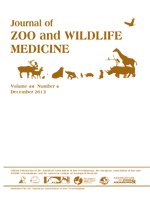An estimated 1,170 white (Ceratotherium simum), black (Diceros bicornis), greater one-horned (Rhinoceros unicornis), and Sumatran (Dicerorhinus sumatrensis) rhinoceroses are kept in captivity worldwide, where they are a popular public attraction and serve important roles in education and conservation. Rhinoceroses in captivity are reportedly affected by a variety of foot conditions, including abscesses, nail cracking, and pododermatitis, but there are few studies reporting associated bony pathology in these species. This study aimed to describe osteopathology in rhinoceros feet and identify normal and abnormal osteologic features of rhinoceros feet. The metacarpal-tarsal and phalangeal bones from 81 feet (67 skeletal specimens and 14 cadaveric feet), derived from 27 rhinoceroses of various species, were evaluated in the study (1 black, 11 white, 2 greater one-horned, 3 Javan, 9 Sumatran, and 1 unknown). Bones were examined visually (skeletal specimens) or by computed tomography (cadaver specimens) for evidence of bony lesions. Of the 27 rhinoceroses examined, 22 showed some degree of bone pathology in at least one limb. Six broad categories of pathologic change were identified, with numbers in parentheses representing numbers of rhinoceroses with lesions in at least one limb/number of rhinoceroses examined: enthesopathy (20/27), osteoarthritis (15/27), pathologic bone remodeling (12/27), osteitis-osteomyelitis (3/27), fracture (3/8), and subluxation (3/8). The frequency of pathologic changes in fore- and hind limbs was not significantly different. Most (91%) enthesopathies were observed on the proximal phalanges of the digits, and osteoarthritis was most common in the distal interphalangeal joints of the medial and lateral digits (32 and 26%, respectively). In addition to the pathology described, all examined rhinoceroses also had multiple small surface lucencies in the distal limb bones as an apparently normal anatomic feature. This study is an important first step in identifying both normal and pathologic features of rhinoceros feet and hopefully will thereby contribute to the improved knowledge and care of these species.
How to translate text using browser tools
31 December 2013
OSTEOPATHOLOGY IN THE FEET OF RHINOCEROSES: LESION TYPE AND DISTRIBUTION
Sophie Regnault,
Robert Hermes,
Thomas Hildebrandt,
John Hutchinson,
Renate Weller
ACCESS THE FULL ARTICLE
bone
foot
joint
pathology
remodeling
rhinoceros





